Subscribe & stay up-to-date with ASF
One thing is clear: with the possible exception of Baltic Sea rivers, European Atlantic salmon numbers are low in 2021. There are multiple reasons, but for many of the salmon, they are facing very hot conditions and low flows, both likely related to climate change.
In addition, for anglers the emergence of the Delta Variant of Covid-19 is wreaking havoc in many areas that had previously been improving. See the notes under Iceland, for example.
I have sent out to a few dozen contacts, from Ireland to northwest Russia, an enquiry for information, but as expected, some are on vacation, and others very, very busy with field work. It is best to treat the overview below as anecdotal, and certainly for many rivers migrations are far from complete.
One theme this year is Atlantic salmon populations under stress. There is a disease striking in the Baltic and some Atlantic Ocean populations such as in Denmark. There is the continued expansion of invasive Pink salmon that were originally placed in White Sea rivers, and these invasives have now become very common not just there but in northern Norway and are finding their way into many rivers further south. In Norway concerns about other invasives like pike, plus historically low salmon runs in the mighty Tana River have resulted in a non-fishing year.
At the end of this week’s Rivernotes is a newly published scientific article that shares fascinating information on the movement of Atlantic salmon at sea in the eastern half of the Atlantic Ocean. Much to consider in it.
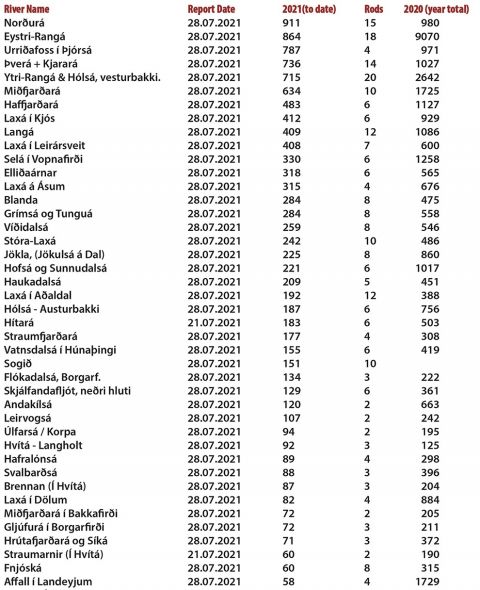
The Iceland returns of Atlantic salmon depend not only on at sea survival, low water and other physical conditions, but also access of anglers to rivers, and while Covid-19 conditions have been better this year, there have still been major difficulties around travel.
The numbers above may be hard to read, and so there is a pdf with larger print available for download.
Several news reports this week are alerting both residents and any travellers that the Delta Variant of Covid-19 has taken over from all others, and numbers have been increasing. In the U.S., the government’s Centres for Disease Control and Prevention is labelling the Iceland levels as HIGH, and suggesting great caution about travelling to Iceland. Iceland authorities now require a negative test for Covid-19 within 72 hours before arrival, and that includes fully vaccinated individuals. The health authorities are making public statements that vaccinated individuals can still be infected with Covid-19. Not a good situation on this wonderful island of Atlantic salmon rivers.
If one can spend time on a river in the outrageously beautiful Icelandic landscape, that is a lifetime memory. Or perhaps one that draws you back year after year.
https://www.asf.ca/assets/files/icelandic-rivers.pdf
In the north of Norway there have been a number of very real problems.
From the Fishing and Hunting Association in Sør-Varanger came news of halted fishing in several of its local rivers. The ban came as the number of Atlantic salmon dropped to new record low.
According to local fishermen, the rivers of Karpelva, Munkelva and Klokkerelva are all with extremely low numbers.
The greatest river of the region the Tana, forming the border of Norway and Finland, and known for its giant fish, has had its fishing season stopped entirely. In addition to greatly reduced numbers, there are concerns about invasive species such as pike in the waterways.
To add to these issues, there have been considerable numbers of Pink salmon in 2021. The species has spread into the rivers of northern Norway and have been expanding their range southwards.
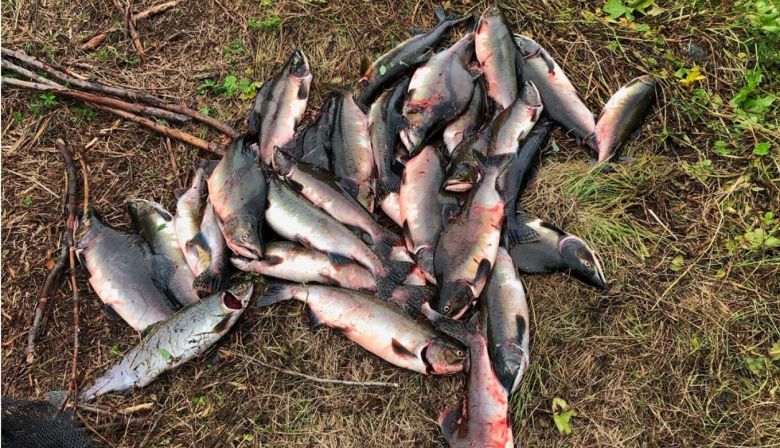
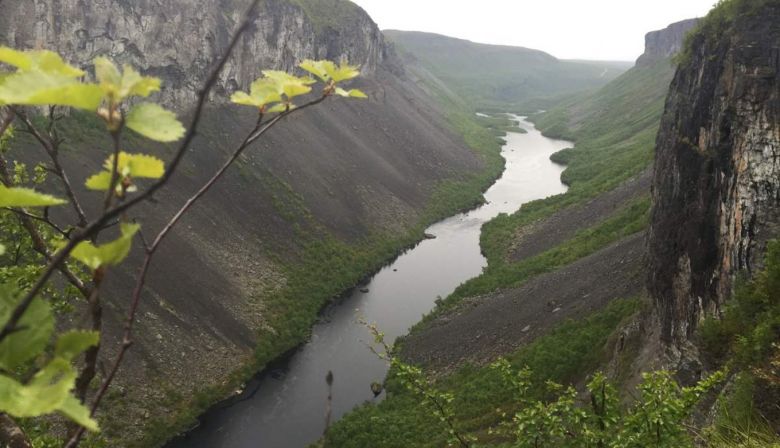
Alta River
Vegard Ludvigsen, General Manager of the Alta Laksefiskeri Interessentskap (ALI) says:
The total catches has so far in the 2021 season has been below the 2020 season, which was also below normal.
As to large Atlantic salmon, the catches over 18 kg are about the same number as in other recent years. The biggest so far is a female of 25 kg.
The Covid-19 situation has also influenced us. Most of the rod days have been sold, with most of them sold to Norwegian anglers.
With a need to take extra precautions on salmon harvests, ALI has cut in half the daily take of Atlantic salmon on the Alta in Summer 2021.
Nationally, this week Norway saw the highest numbers of Covid-19 since May 26. The country has delayed exiting from travel and other restrictions until at least the middle of August, and likely later, given the rise in delta variant cases.
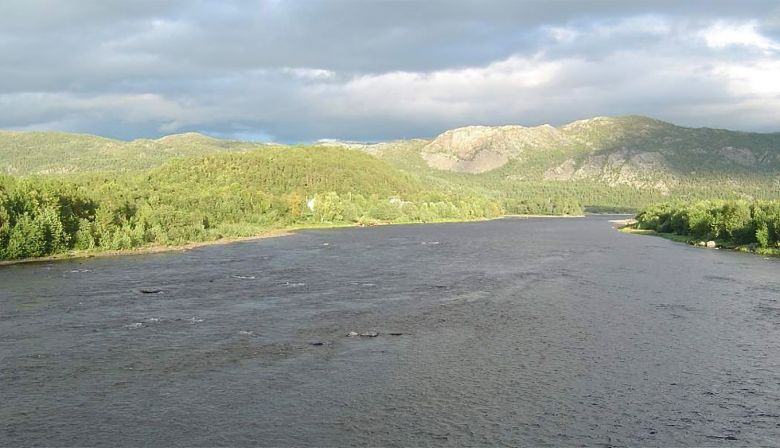
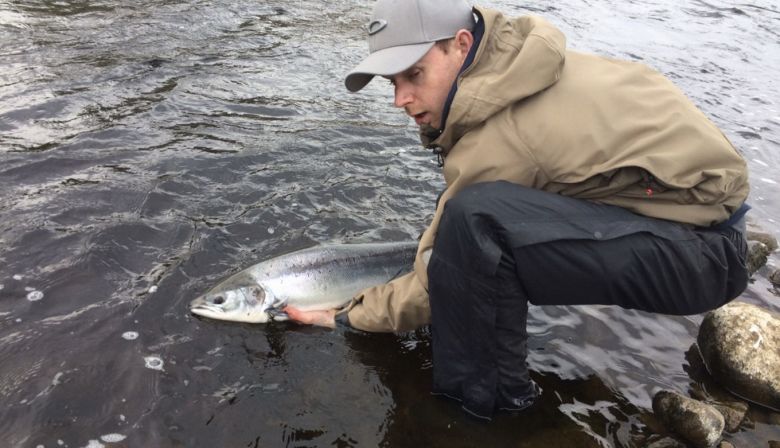
The Drowes River empties from Lough Melvin into Donegal Bay, and is best known for having some of the earliest return of migrating Atlantic salmon in Ireland. The river lies in the border area of counties Leitrim and Donegal, and just to the east, Lough Melvin is on the border of Northern Ireland’s Fermanagh, and County Leitrim in the Republic. The many feeder streams are in general very productive of Atlantic salmon.
Shane Gallagher, Manager of Drowes Salmon Fishery says:
It has been another unusual season here.
Fishing was severely impacted by Covid-19 restrictions from the start of the year until late May. Only anglers living within 5 km of the river were permitted to fish so angling effort was greatly reduced. Despite this the run of spring fish encountered was good from February onwards. The size and quality of the fish compared well to previous seasons.
Travel restrictions for anglers were eased from late May but water levels were much lower than normal and continue to be very low.
Grilse arrived in numbers later than expected, from mid June and were present in good numbers. For the past month or so water levels have been exceptionally low and temperatures, both air and water, unusually high. As a result fishing conditions have been difficult and fishing effort has been minimal.
We also have had eight invasive Pink salmon, the first reported on July 2, 2021.
As I write, we are getting some much needed rain and the forecast is unsettled so hopefully we will get a rise in levels before season’s end.
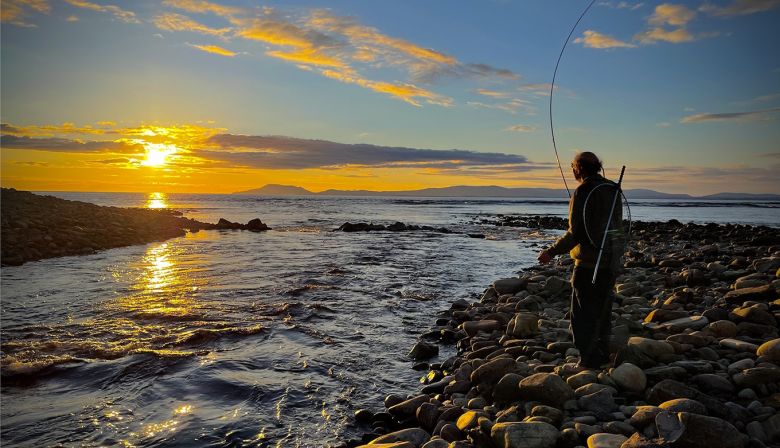
From my limited investigation there would appear to be an increase again this year.
However, low water has resulted in fish not entering spate rivers. We have some underwater footage over a number of weeks which indicates substantial runs of grilse.
Spring salmon appear scarce this year.
Alastair (Ally) Gowans is a well know expert of fly casting and Atlantic salmon angling, especially in the western Highlands. He has these notes:
Very little rainfall in Scotland between May and the end of July which meant that most rivers were down on their bones. Some did get water during the latter part of July.
With the ground so dry these spates were short lived but they did encourage some movement of salmon and sea trout.
Catches during the spring of 2021 (until the end of May) were generally speaking below the five-year averages. With the drought conditions during June and July catches plummeted to no more than around 50 per cent or at most 60% of the five-year averages on the majority of rivers.
Very disappointing but we can’t do anything to change the weather.
Last year (2020) catches generally exceeded the averages by a fair margin. Was this because of much better fishing conditions, less high seas fishing effort due to Covid-19 or were the fish, which were in much better condition, feeding and surviving better at sea? Speculation abounds!
There are signs of Atlantic salmon gathering at some river mouths awaiting water to allow them to move upstream.
On a recent trip to the Outer Hebrides I watched good numbers of fish prospecting in the salt around the diminutive flow emanating from what remained of a river. Some of them were colouring up so they must have been waiting for a while. Hopefully rain will arrive shortly to aid their passage.
Covid-19 travel restrictions meant that many regular tenants could not come here to fish during the spring but locals occupied the spaces on most beats so the angling effort would not have been severely dented. Certainly it wouldn’t make a valid excuse for the lack of springers caught.
For the first time in 20 years our fish counter on the Helmsdale is broken. Being repaired now but unlikely to provide data for this season.
My observations? Spring migration lasted until end of June. All things delayed in the salmon cycle this year, so grilse arrived late. They are in good condition, up to 5 lb. Several spring salmon weighed 20lb and more.
Electro-fishing has produced some very interesting and unusual results. We find that fry, this year’s hatched ova, are half normal numbers.
Conversely parr, or last year’s hatched ova, are about double normal number. The scientist on this river, Dr. Alan Youngson, believes it possible that parr seeking food in a very late spring ate the younger generation of salmon. Insect and fly life which supports young salmon all hatched later than usual in 2021.
To give numbers to the weather — on Midsummer’s Night the temperature here at home, 15 miles from the sea, was 26 C.
Rod catches are down on normal, but the angling season is less than half-way through. Covid-19 has had an effect on angling and rod pressure, but not extreme.
It has been another overly warm summer, and reports by late July talked of still warmer temperatures and dropping flows. Towards the end of July temperatures reached 22 C. and above, and on some nights didn’t drop below 20 C. But in the past week or so there has been rain and cooling temperatures, according to the Spey Fishery Board
Still Atlantic salmon were making their way up the system. The Gordon Castle Brae beats noted 41 salmon for the week ending July 25.
Tay
As with the Spey, the temperatures were high and the fishing tough. For the best overview of the situation on this great Atlantic salmon river, click on the Tay District Salmon Fisheries Board August 2021 Newsletter.

Tweedbeats provides updates on what is happening on the Tweed. As of Aug. 1 they are noting:
Last year, in 2020, the June and July salmon catch combined was within a gnat’s crochet of 3,000. Here in 2021, the same two months could get to 700, certainly not more.
Last year, the Tweed annual total was 9,614, the highest since 2013. Simple maths tells us that, so long as the rest of 2021 equals the same scores as 2020, then the very best annual total will be around 7,000.
As usual, everyone is casting around for excuses, low water conditions, a cold late spring, Russian and other trawlers, you name it. The trouble is that none of them really stack up, and the reality is that 2020 had the sunniest and driest April and May on record, yet none of this deterred masses of fish coming in. The combined rainfall totals here for April and May 2020 were 30.5 mm; the 2021 equivalents were 80.5 mm, getting on for 3 times as much. For the lowest beats, which fish coming in can always reach, it is only in the last 3 weeks, in July, that drought and heat has been a serious factor.
The truth is that, until recently, the salmon simply have not been there. Day after day beats nearest the tide at Tweedhill, Ladykirk and Horncliffe have been fishing, yet reports have been of fish neither seen nor caught.
That has changed, even if the paucity of water has not. It will rain sometime, but every day it does not, denies our loyal fishers their much anticipated good fishing holiday, unless you are lucky enough to be going as close as possible to the sea and Berwick. At current levels, it must be almost impossible for anything other than the smallest grilse to progress above Coldstream. The river is that low.
Numbers are only available until June 30 for the counting facility at Riding Mill, that combines numbers for Atlantic salmon and brown trout.
Numbers are low this year, and last year Covid-19 concerns resulted in no counts at all. But compared with 2019, this year there were 55 fish in April compared with 274 in 2019; 319 in May, compared with 1,515, and in June 2,108 fish compared with 4,640 in 2019. Not great this year, some would say.
Wear
This river had 20 salmon in April 2021 compared with 37 in 2019, with May 97 vs. 137, and June 2021 had 1,814 salmon compared with 1,236 in 2019. Some potential there for 2021.
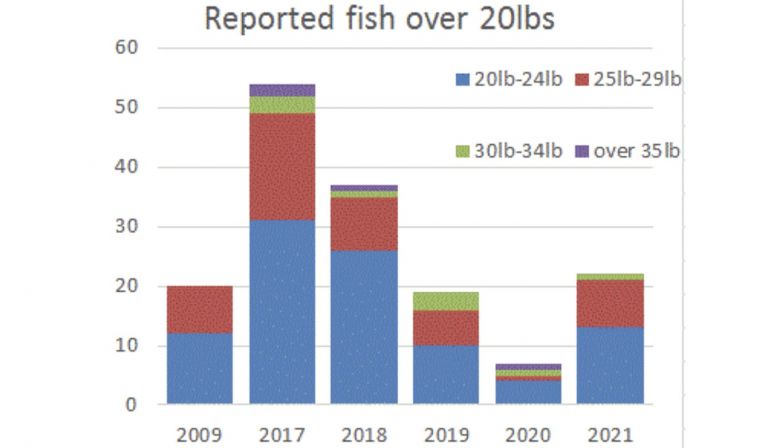
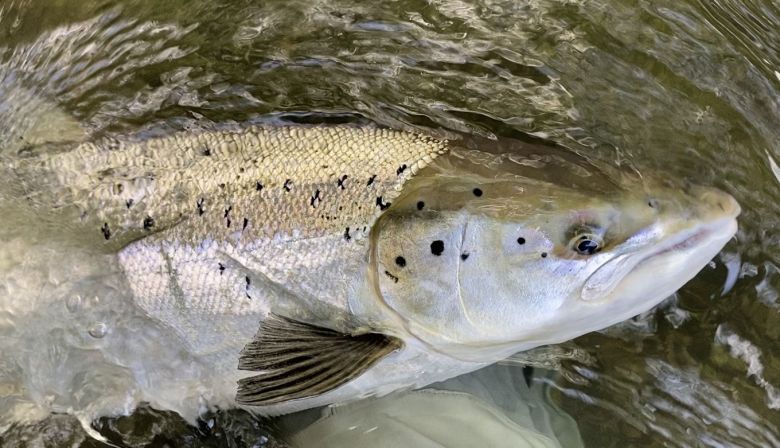
Wye and Usk Rivers
The Wye and related rivers curve north through the England/Wales borderlands, and then the line is into Wales for most of the headwater streams.
Overall, the numbers in 2021 are far below those angled in 2020 and even less than the five-year average.
Water temperatures had been very high recently, and many beats were closed due to the temperatures. The air is significantly cooler in the past week, putting water temperatures well back to safe levels.
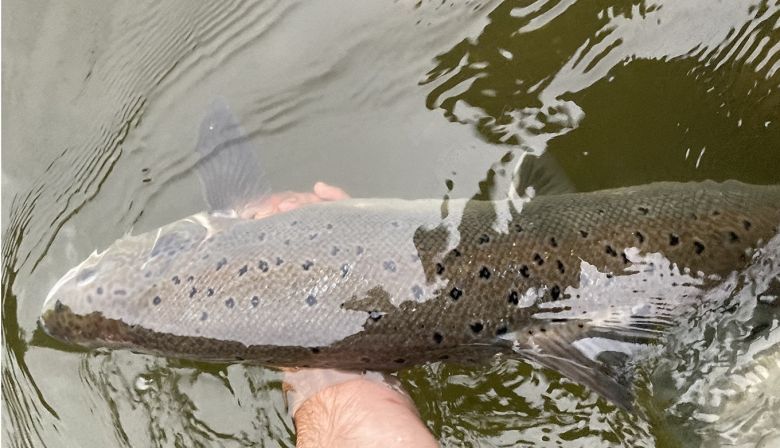
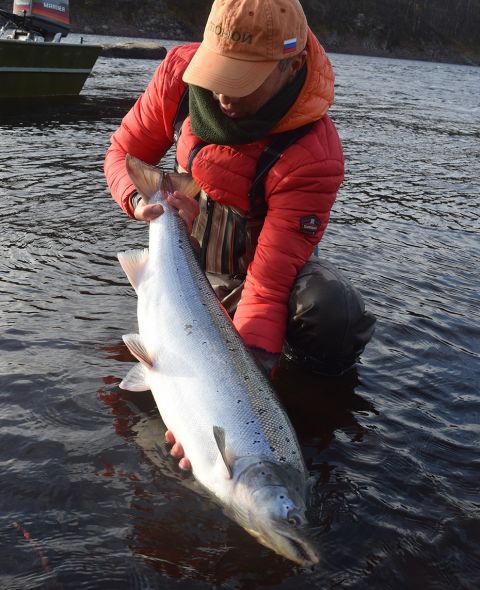
Ponoi
The Ponoi River roars as the water tumbles its way from the central part of the Kola Peninsula eastwards to reach the ocean adjacent to the White Sea.
The Atlantic salmon tend to be large, and are known for spending long periods at sea. The Atlantic salmon are almost always healthy when returning from their ocean feeding grounds.
Steve Estella of the Ponoi River Company says:
We operated a reduced Spring season due to the travel restrictions but overall it was good!
Fish were in good condition and numbers were in order of past statistics.
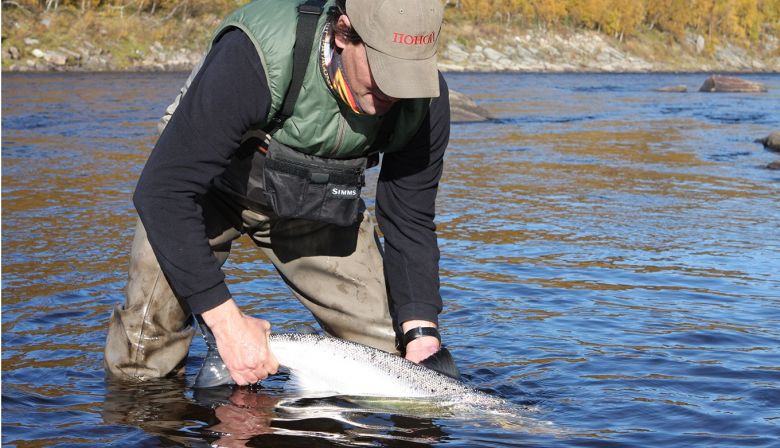
Kharlovka, Rynda, and nearby rivers
The Atlantic Salmon Reserve has some of the most magnificent “beasts” that return to its rivers. Well worth finding a way to have an experience in these incredible rivers that will last a lifetime.
In 2021 the rivers were suffering under a serious heat wave and low flows, with temperatures reaching past 30 C. and the Rynda down 25 cm during the week.
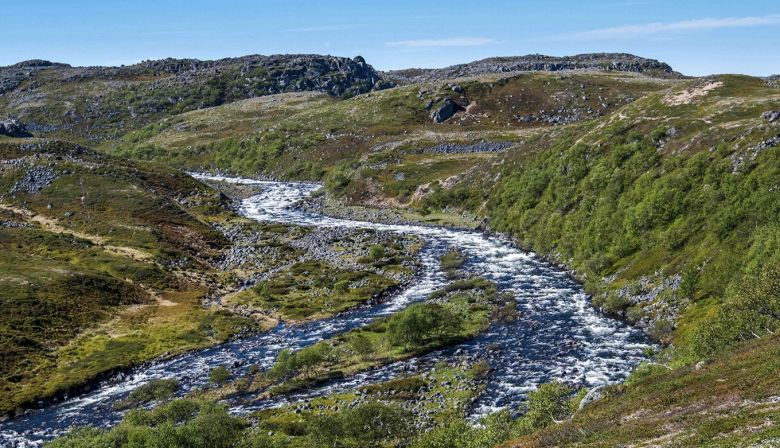
Sick wild Atlantic salmon with a flesh necrosis have been found in the Kola and Tuloma Rivers in the western part of the Kola Peninsula. Out of 4,802 salmon caught during the three first weeks of June, 545 were infected. This is a continuing problem in these rivers, having begun about five years ago.
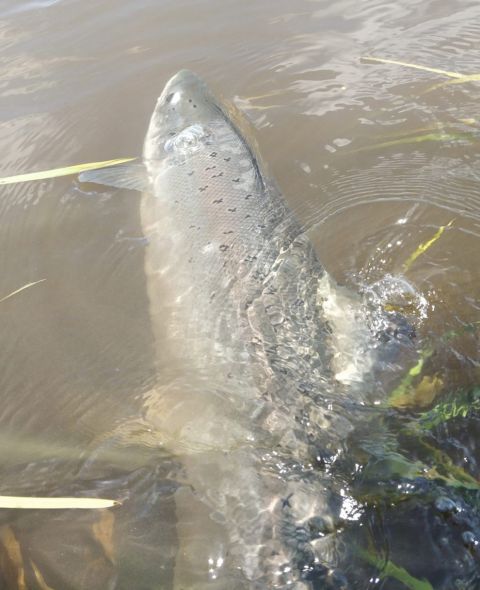
Skjerna
This river on the west side of the Jutland Peninsula is one of Denmark’s true success stories with Atlantic salmon.
The season begins 16 Apr. and closes on 15 Oct. To the end of July 2021, 597 Atlantic salmon have been caught.
There is a bag limit of one killed salmon per person per year, as long as the quota within the two size groups is not exhausted. Offence will cause exclusion from fishing in Skjerna watersystem this year and the following year, and a fine of 2,500 kr. Anglers are only allowed to land two salmon a day, and 15 salmon a year.

The Skjerna River Federation (SÅS) says about Pink salmon:
We are aware that there are now again Pink salmon in the Skjern Å system. These “humpback salmon” are an invasive species in Danish streams, and you should therefore kill the fish and take them home if you catch one.
The humpback salmon has cycles in their abundance, so higher numbers of the Pink salmon come the same year. After spawning, the salmon die and the fry hatch the following spring. The following year, they return to spawn. Thus, there is only an increase every two years. In 2019, we saw the first Pink salmon in the Skjerna system. It is thus in odd years that we experienced the rise in numbers.
In Norway and especially northern Norway, humpback salmon are a growing problem and great efforts are being made to eradicate them. It is still too early to say what they could mean for Atlantic salmon, but there is cause for concern.
The registration system is not designed for the registration of humpback salmon, but we would really like to hear from anyone who catches one of these fish in the Skjerna.
The Pink salmon are especially characterized by dots on the tail, and are black in the mouth. When the Pink salmon have been in the river for a while, the fish develops a hump-like shape, so you are rarely in doubt. The humpback salmon will most often have a size between 50 and 60 cm.
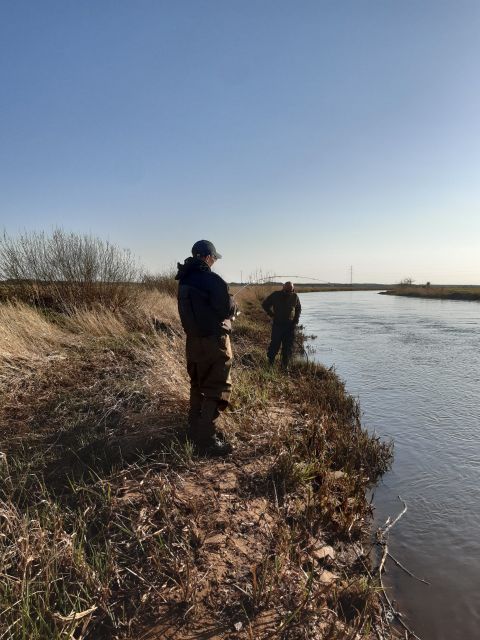
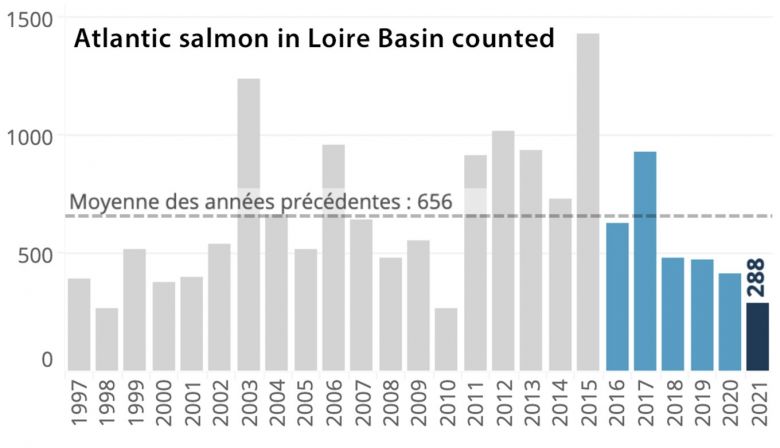
There has been a serious effort to bring Atlantic salmon runs back to the Loire River, but 2021 has not been one of the good recent years.
As of June 28 only 263 Atlantic salmon have been counted at Vichy, on the most productive river tributary, the Allier. This, despite more than 30 years of conservation efforts of the river and its Atlantic salmon.
Over recent years, the proportions of the returning salmon are:
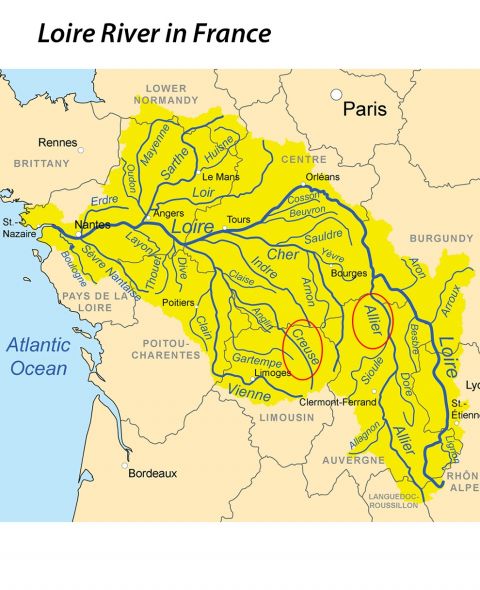
Some of these short rivers are exquisitely beautiful, and can be very good habitat for Atlantic salmon as well.
The three most productive in 2021 are:
164 in the Eleron River, counted at Karhoman. The best recent year was 1,368 salmon in 2010
154 in the Aulne River, counted at Chateaulin. Maximum was 1,291 in 2016
96 in the Princes River at Moulin des Princes. Best recent return was 855 in 2017.
These numbers are very, very low, even when compared with 2020.
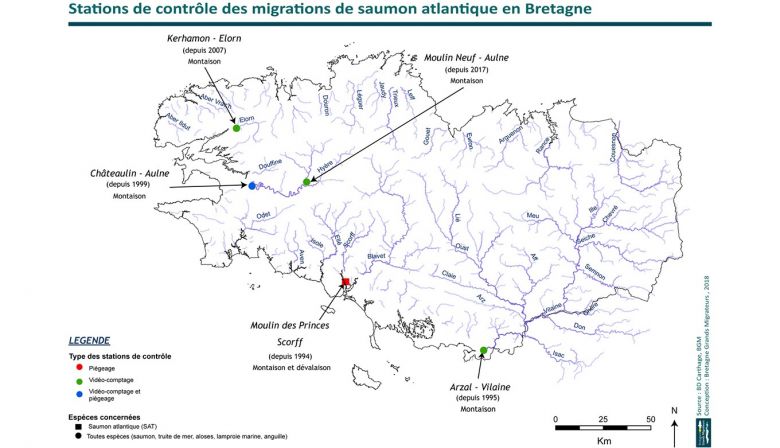
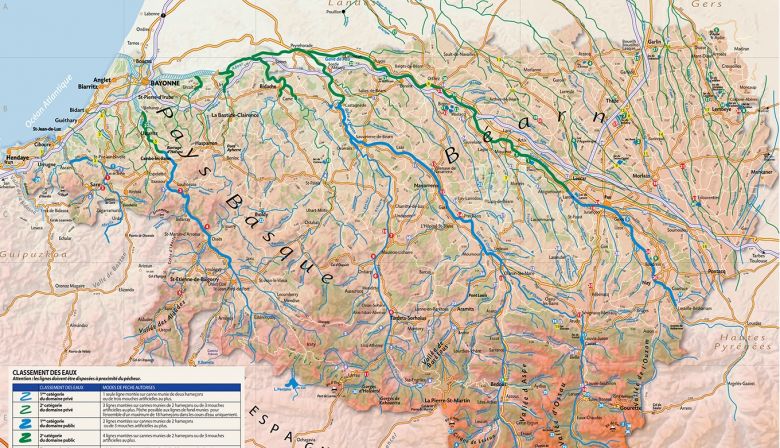
Adour and the Pyrenees Rivers
Pliny the Elder wrote his “Natural History” which is among the largest single works to come down to us from the Roman Empire. As most will know, the author died of a heart attack induced by the gases and dust of the Pompeii eruption of 79 AD.
Writing of Atlantic salmon, he said it was the fish most loved of the people of Aquitania, the region of present day France that includes the Adour and nearby rivers.
The love is still there, but the numbers are not.
The Fédération Pêche 64 that represents anglers in the Adour watershed writes:
The total number of salmon caught, as of July 16, 2021 is 105 against 466 on the same date in 2019, or about four times less. The year 2020 is not taken into account because of confinement due to Covid-19.
The 105 salmon caught are distributed as follows:
99 on the Gave d’Oloron (including six declared released)
4 on the Season
2 on the Gave de Pau
These low numbers in 2021 are made worse by continuing frictions with commercial fishermen that demand the right to deploy nets at Bayonne in the estuary of the Adour.
Asturias
The rivers of Asturias are in real Atlantic salmon trouble. As of July 15, 2021, this has been declared the fourth worst year of the last 20 years. The salmon are continuing their historic decline in a time of climate change creating ever more difficult conditions
526 salmon were harvested by anglers – a relatively high proportion of the rivers’ populations
Rio Nalon-Narcea…… 300
Rio Sella…. 125
Rio Cares…. 50
Eo River….. 50
Rio Esva……. 1
A new group, Asturias Salmon Vivo is attempting to put pressure on the regional government:
We demand that the Regional Administration prohibit sacrificing one more salmon in the rivers of Asturias until a plan to manage salmon by basin is developed and begins the recovery of river ecosystems. If all this salmon populations recover, we might start thinking about sacrificing some salmon again.
Cantabria
To the east of the Asturian rivers is Cantabria, and it has fared no better than Asturias:
Pas….6
Nansa….5
Asón….16
Bidasoa….less than the 75 official quota

Despite numbers of Atlantic salmon being low, harvests to significant quotas are allowed. This can be accomplished with use of natural bait, lures and flies. Most opt for natural bait.
Miño
Forming the boundary of northern Portugal with Spain, the Miño has a small population, with a mystique of salmon heritage around it.
The Miño has been allowed to decline to a very sad state – with harvest of salmon still allowed, and pollution being a problem.
A smolt tracking project has discovered that fewer than 50 per cent of the outgoing Atlantic salmon reach the open sea. Predation is at least part of the problem, with Great Cormorants, and mink being a couple of the predators. But there may be other issues, including chemical pollution.
Migramiño, a Portugal/Spain cross-border project is supplementing from a hatchery with 100,000 juvenile Atlantic salmon over the four years up to 2021. There is also at least talk of better management in order to protect and restore the Atlantic salmon run.
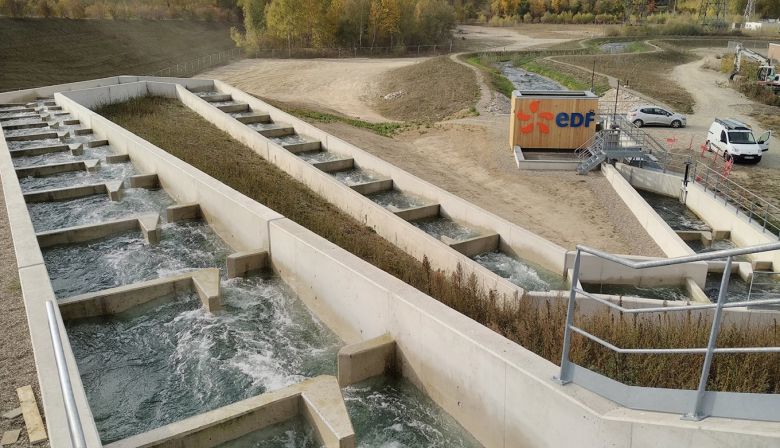
As with most salmon returns in 2021, the Rhine is not doing well.
At Gambsheim, as of 4 June, 2021, there were 32 Atlantic salmon counted.
At Gerstheim, with renovations to its fish ladder in 2019, there were only 3 Atlantic salmon as of May 10.
There is so much hope but 2021 is not one of the better years for Rhine salmon.
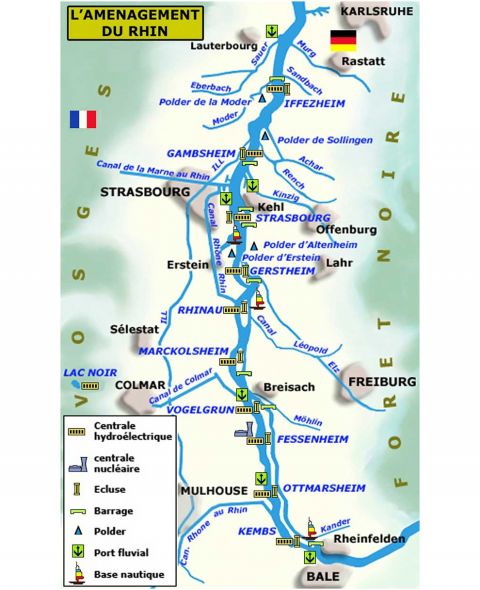
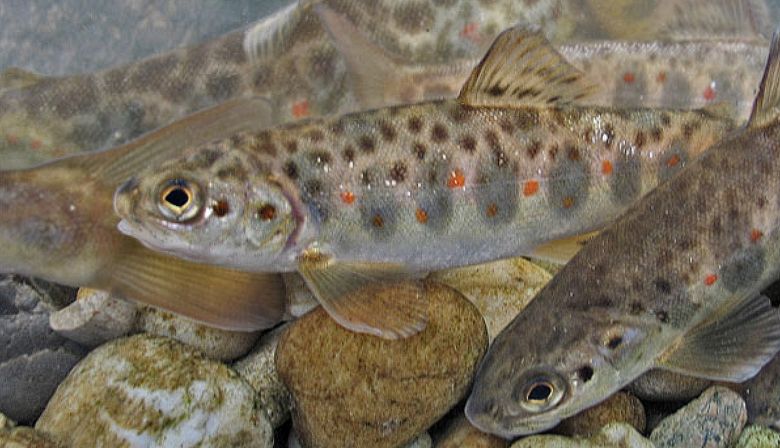


Glen Douglas of Fiskevårdsförbund has a general overview of the Swedish rivers so far in 2021:
A quick review of the major undammed rivers show pretty good returns so far.
Kalix River = 14,188 (2nd highest after 2020).
Byske river = 5,419.
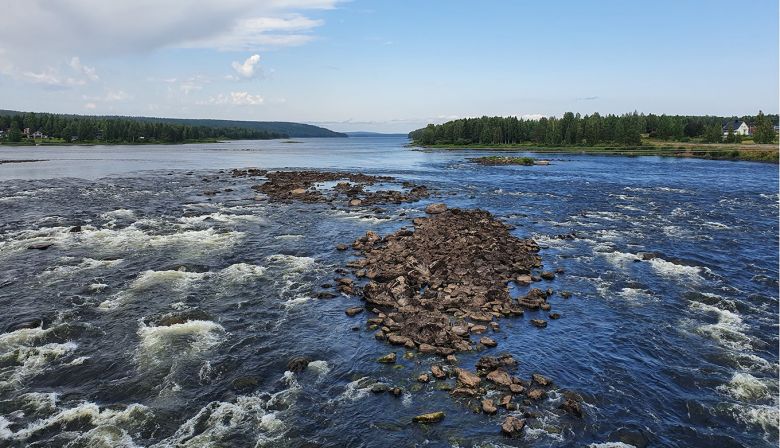
Not all is perfect this year.
Glenn Douglas goes on to say:
We have virus problems with strawberry marks on the belly region and salmon do not seem to be in top condition. The Swedish veterinary institute is carrying out continuing studies.
Rivers with dams and poorly functioning ladders, and smolt migration are continuing problems.
We could also do with a bit of rain.
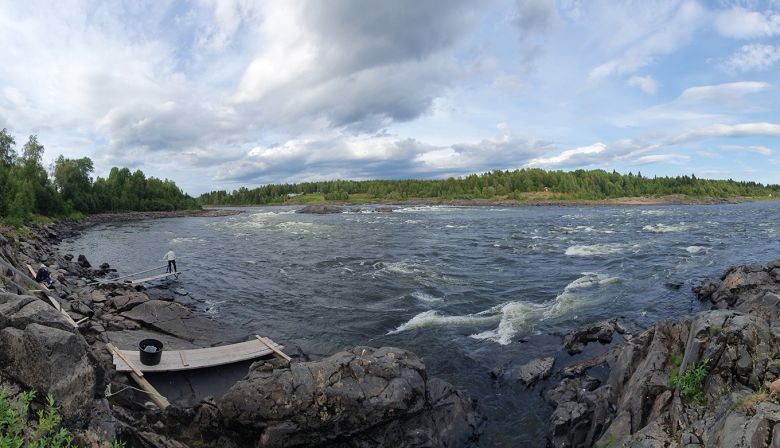

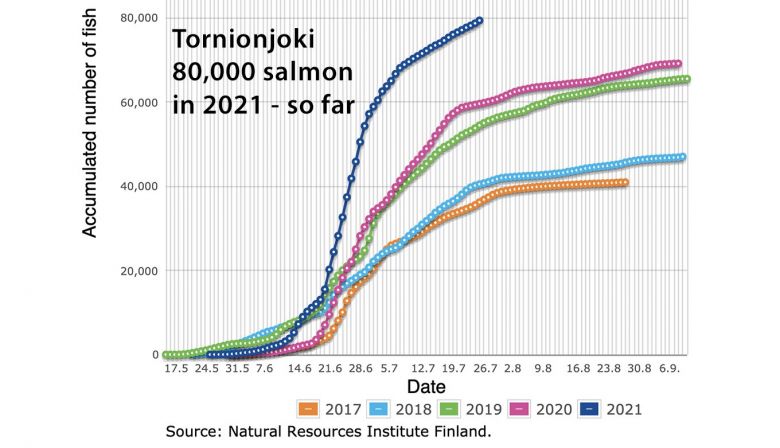
Tornionjoki or Torne
This great river has no dams, and is the ultimate powerhouse of Atlantic salmon in the Baltic Sea.
This year has an exceptionally good run, with 81,802 returning Atlantic salmon counted. Other excellent years have been 2014 and 2016.
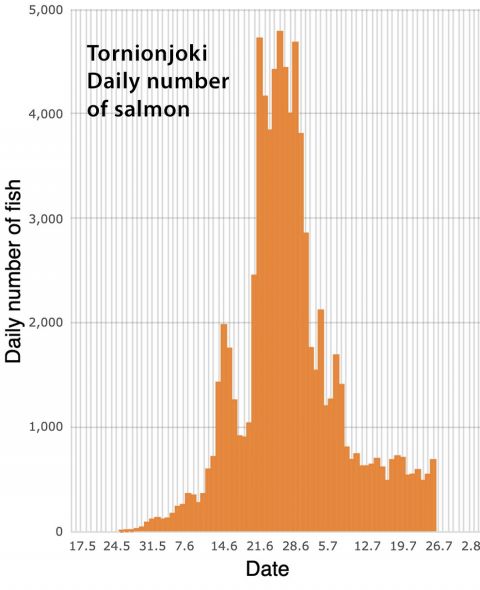
Simojoki
This somewhat smaller river on the northeast side of the Baltic has also been doing well in 2021.
So far there have been 3,309 returning, just 200 short of the other best year, 2020.
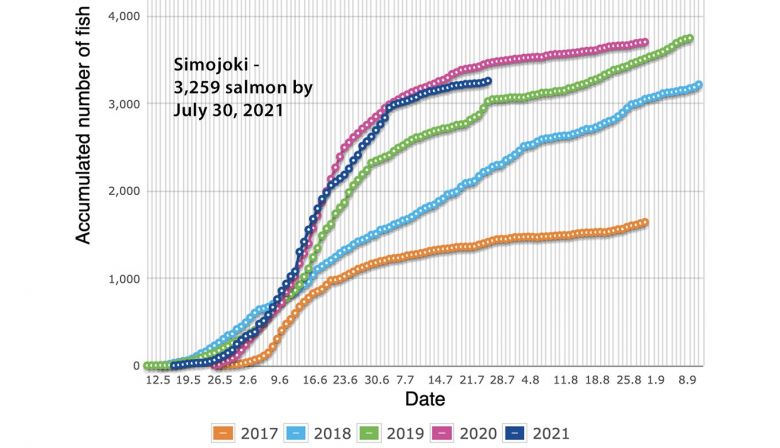

The Tana River has already been mentioned under Norway, but needs to be mentioned under Finland as well.
The 361 km of the Tana is the most productive Atlantic salmon river in the world.
One recent 2021 report said of the situation:
Despite the fishing ban, there are still very few salmon in the Tana watercourse
Although it is forbidden to fish in the Tana this year, few salmon are in sight in the watercourse that the Norwegian Environment Agency describes as “the most important in the world.”
“The figures we see now are definitely very gloomy. They have been extremely low for three years,” Panu Orell told Norwegian Broadcasting (NRK).
Just over 14,000 tonnes of salmon appeared in the Tanavassdraget to spawn last summer. That is less than half the number in 2018, which was not a good year either.
In April, the Norwegian and Finnish authorities agreed to ban salmon fishing in the watercourse this year.
The Directorate of the Environment’s director Ellen Hambro has characterized the watercourse as “the most important in the world.”
A significant proportion of the proposed legislation targets traditional Sámi net and weir fishing techniques along the section of the river shared by both Finland and Norway and recreational tourist angling on the Finnish side of the border.
The indigenous Sámi people of Lapland have earned a living by catching salmon in the rivers of the Arctic Ocean region for centuries. They traditionally rely on drift net and weir fishery, two gears that have been severely restricted by the new proposals.
Owners of holiday homes in the region have also added their voices to the opposition. Veikko Rintamäki is originally from Seinäjoki, but owns a second home on the banks of the Teno.
“We bought our property legally and the lot included fishing rights. If we can’t use these rights, it is a clear infringement of our fundamental property rights,” he said. He has submitted a complaint to the Chancellor of Justice that seasonal residents of the area were not sufficiently consulted in the preparation of the proposal.
The world’s record for Atlantic salmon is held by a salmon caught on the Tana; it was 36 kilograms (79 lb) and was taken in 1929 by the late Nils Mathis Walle.
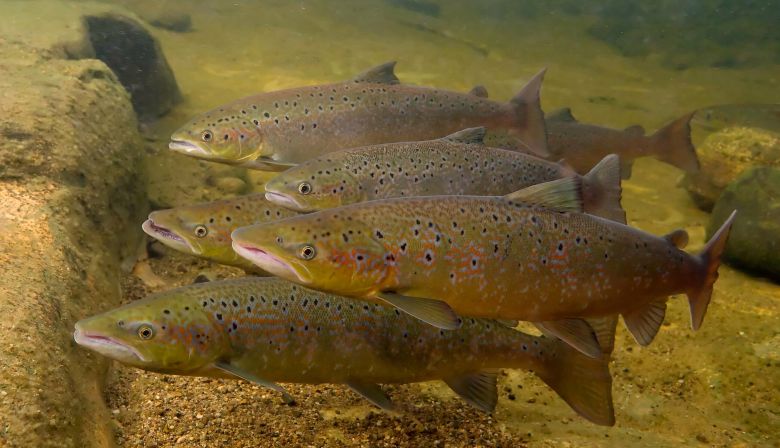
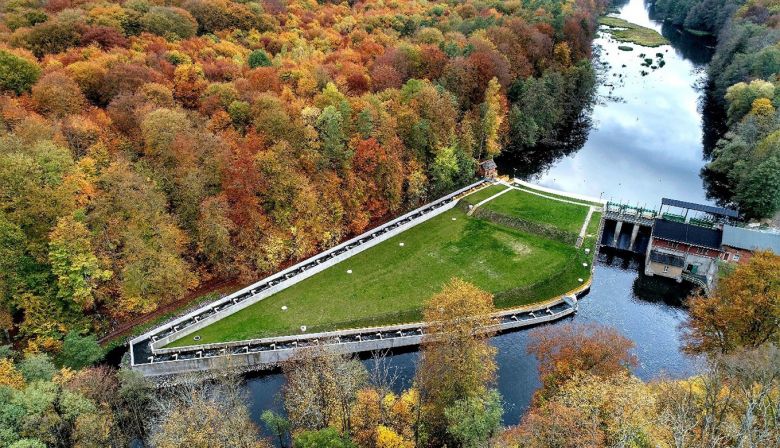
The conditions for Atlantic salmon in 2021 are not good. There is drought, and warm temperatures.
Right now water temperatures in the rivers are too warm for returning salmon.

A total of 204 of the “pop off” satellite transmitters provided data, mostly from seven European areas and also as part of the ASF/NOAA/DFO tracking undertaken in southwest Greenland.
The study is very enlightening in showing the depths to which Atlantic salmon go in order to feed, in the way their movements relate to seasons, and how different sets of rivers utilize different parts of the North Atlantic as feeding areas.
The study is “open” and is well worth a serious read, in order to understand better the movements of the species. A pdf can be downloaded below.
As for anglers, the emergence of the delta variant of the Covid-19 pandemic virus has thrown late summer and autumn plans to visit Atlantic salmon rivers in Europe into disarray. One can only say to do homework, keep abreast of regulations and new reports.